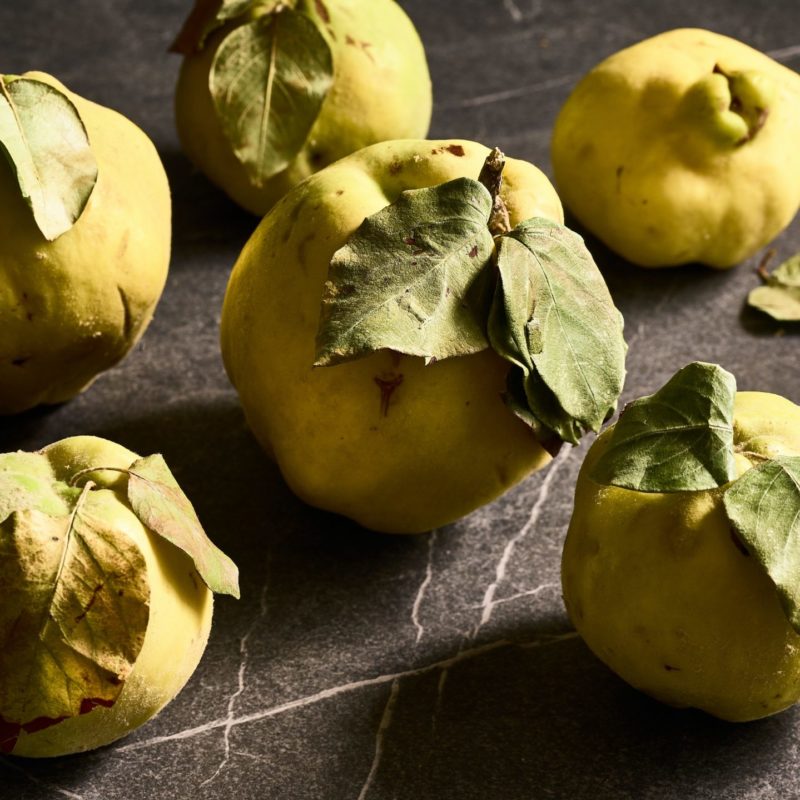Quince / Membrillo

Information provided by Mission Garden
Origins
Native to the Caucasus in Asia, quinces were most likely first introduced into the Tucson Basin by Spanish missionaries at the end of the 17th century. They flourished here and became an integral part of rural orchards and urban backyards. Historic documents make mention of a row of quince trees that formed a windbreak in the original Mission Garden during Spanish Colonial times.
Quinces were common in the Old Pueblo throughout the Territorial period. In all likelihood they surrounded the road to town, which was called Membrillo, before it became Simpson Street. Part of a historic neighborhood named Barrio Membrillo—after the trees that had grown there—still exists, from Simpson Street to Granada and between the Interstate-10 frontage road and the former Southwestern Railroad tracks. Most of the barrio was demolished for the construction of I-10 in the early 1950s and the construction of the Tucson Convention Center in the late 1960s.
In Mission Garden
Quinces are iconic trees in the Garden, numerous and prominently featured throughout the Spanish Colonial Fruit Trees Orchard. For many Hispanic visitors with roots in this region, the sweet autumnal aromas of ripening membrillos elicit poignant memories, often of nanas (grandmothers) making quince bars or quince marmalade. Although membrillo trees were once common in Tucson backyards, if it had not been for Mission Garden’s work to revive them, they may have slipped entirely into oblivion. These small deciduous trees of the rose family grow very well in the Sonoran Desert region. They are heat and frost tolerant, but do require regular and abundant irrigation, and fertile soil.
Harvest and Use
Quinces are harvested from mid-October through November. There are many different varieties. They are all too hard to bite into, and most are so astringent that they are not palatable when eaten right off the tree. The cultivars in Mission Garden, however, are good to eat when picked and sliced into bite-sized pieces. It is typical to sprinkle chili powder, salt and lime on them to bring out their juices.
Nevertheless, quince fruit is customarily cooked with cane sugar to make marmalade, or hardened into bars, called dulce de membrillo or cajeta de membrillo, which is sliced and paired with cheese. Quinces contain a considerable amount of pectin—the word “marmalade” is actually derived from the Portuguese word for quince, marmelo. Quince fruit stores well at room temperature for a month or two, emanating a fragrant aroma. It has therefore long been used as an air freshener in linen cupboards and clothes closets.
We’re taking quince pre-orders in the CSA shop this week. Reserve yours and try your hand at preparing a delicious quince recipe such as dulce de membrillo!